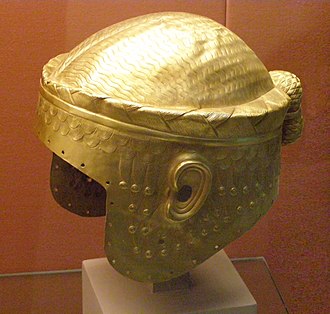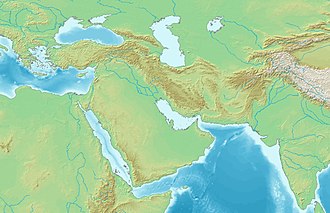ஊரின் முதல் வம்சம் ஊரின் முதல் வம்சம் (First Dynasty of Ur) பண்டைய அண்மை கிழக்கின் சுமேரியா எனும் மெசொப்பொத்தேமியாவில் உள்ள ஊர் நகரத்தின் முதல் அரச மரபை கிமு 26வது-25வது நூற்றாண்டுகளில் மன்னர் மெஸ்காலம்துக் நிறுவினார்.[1] மெசொப்பொத்தேமியாவின் வரலாற்றின் துவகக் வம்ச காலத்தில் இருந்த ஒரு அரசமரபாகும். ஊரின் முதல் வம்சத்திற்குப் பின்னர் கிஷ் இராச்சியத்தின் முதல் வம்சத்தினர் மற்றும் உரூக்கின் முதல் வம்சத்தினர் சுமேரியாவை ஆண்டனர்.[2] செமிட்டியர் அல்லாத ஊர் வமிசத்தினர் கிழக்கிலிருந்து கிமு 3,300-இல் மெசொப்பொத்தேமியாவில் குடியேறியர்கள் ஆவார்.[3][4]  [5]]]     சுமேரிய மன்னரகள் பட்டியல்படி, இறுதியாக ஊரின் முதல் வம்சத்தவர்களை ஈலாம் நாட்டின் அவான் வம்சத்தவர்கள் வென்று ஊர் இராச்சியத்தை கைப்பற்றி ஆண்டனர்.[6] பின்னர் லகாசு இராச்சியத்தினர் கிமு 2500–2400 முழு மெசொப்பொத்தேமியா ஒரு பேரரசாக ஆண்டனர்.[7] ஊரின் மூன்றாம் வம்ச காலத்தில் (கிமு 2112 முதல் 2004) சுமேரியா மீண்டும் மறுமலர்ச்சிக் கண்டது.[7][8] முதல் ஊர் வம்ச ஆட்சியாளர்கள்
முதல் ஊர் வம்ச காலத்திய தொல்பொருட்கள்
இதனையும் காண்கமேற்கோள்கள்
|
||||||||||||||||||||||||||||||||||||||||||||||||||||||||||||||||
Portal di Ensiklopedia Dunia

























